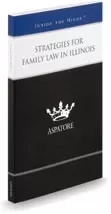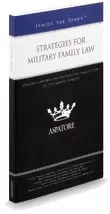In most States that permit enforceable agreements, an agreement for adoption with contact can be permitted for any adoptive child as long as the type and frequency of contact are deemed to be in the child’s best interests and are designed to protect the safety of the child and all the parties to the agreement. Connecticut and Nebraska limit the application of agreements to children who have been adopted while in foster care. Indiana limits enforceable contact agreements to children ages 2 and older.
For children under age 2, non-enforceable agreements are permitted as long as the type of contact does not include visitation. Most statutes permit post-adoption contact or communication for birth parents. Some States also allow other birth relatives who have significant emotional ties to the child to be included in the agreement, including grandparents, aunts, uncles, or siblings. Minnesota permits foster parents to petition for contact privileges. In California, Minnesota, and Oklahoma, when the case involves an Indian child, members of the child’s tribe are included among the eligible birth relatives. California, Florida, Indiana, Louisiana, and Maryland have provisions for sibling participation in an agreement.
Drafting an open adoption agreement and creating an open adoption is also a great opportunity to show a child that he or she is loved. While surely a birth parent can find comfort in getting to know the adoptive family and feel more in control of a difficult decision, a child can also come to understand that a plan has been made to meet his or her needs. This plan was made out of love and cooperation between his birth family and his adoptive family. There are many ways that a family, and a mediator, can use the agreement to a) get on the same page about expectations in the future, b) identify the purpose of the adoption, and c) use language that shows the child that the agreement was made out of love.
Many things can be included and there are pitfalls that parents should consider as a child grows older if there is an open adoption agreement in place. Safety issues should be addressed if need be. Also, social media has allowed teenagers to get in touch with birth parents quickly if they choose to seek them out. The quick nature of texting and emailing can create an information exchange that young people are not ready for so it should be used cautiously. Adoptive parents, if they are unaware that the communication is happening, can become upset. Contemplate limits for any use of social media as the children get older, if for no other reason than to control the speed at which things develop for the child. However, each family will have its own set of needs. What is important is that any open adoption agreement contemplates the needs of a child as they grow older and can accommodate those needs with the appropriate amount of flexibility.
Always, the child’s best interests must be forefront of the agreement. The adoption agreement is not the place for the biological parent to make his or her last stand or the adoptive parent to embarrass the biological parent. Each party must come to the table with respect for the role each has in the life of the child. The decision to give a child up is never an easy one. Currently, only 26 states find that open adoption agreements are enforceable, and certainly, in each state, the courts look to see if a child’s needs are being met. A mediator should be focused on the child in helping the parents reach their decisions, calling on expert advice when needed. With this in mind, mediation can provide a wonderful opportunity to serve children in adoption.
2. Enforcement
For the agreements to be enforceable, they must be approved by the court that has jurisdiction over the adoption. All parties wishing to be included in the agreements must agree in writing to all terms of the agreement before the adoption finalization. The court may approve the agreement only if all parties, including a child over the age of 12, agree on its provisions, and the court finds the agreement is in the best interests of the child. Disputes over compliance and requests for modification of the terms must also be brought before the court. Any party to the agreement may petition the court to modify, order compliance with, or void the agreement. The court may do so only if the parties agree or circumstances have changed, and the action is determined to be in the best interests of the child.
In most States without enforceable agreements, the statutes are silent about the issue of post-adoption contact or communication. Approximately six other States address the issue but do not provide for enforceable agreements. North Carolina’s statute, while providing that such agreements may be entered into by a person giving adoption consent and a prospective adoptive parent, specifically states that contracts are not enforceable and cannot be a condition for consent to the adoption. Ohio, South Carolina, and South Dakota specifically state that mutual agreements for contact are nonbinding and non-enforceable. Missouri and Tennessee leave decisions about contact and visitation with birth relatives to the sole discretion of the adoptive parents.
B. Donor Surrogacy Contracts
Every family is different, and advances in modern medicine allow families to expand their families in new ways. More and more, prospective parents are considering alternatives to natural child conception and pregnancy. With these new alternatives, however, come new legal issues.
When a woman carries a baby to term for another individual, who then becomes the legal parent of the child at birth, this is called surrogate parenthood. Surrogate mothers are often utilized where women cannot conceive or carry a child to term for various reasons. This typically happens through the implanting of an embryo fertilized by the male partner’s sperm (this process is called “artificial insemination”). Same-sex male couples also employ surrogate mothers, often by fertilizing one of their eggs, as an alternative to becoming an adoptive or foster parent. The surrogate mother relinquishes her parental rights the moment the child is born. The biological father becomes the legal father whereas the non-biological parent adopts the child. It is critical to note that not every state allows surrogate parent arrangements.
There are two main types of surrogacy. Traditional surrogacy involves the artificial fertilization of the surrogate mother using the father’s sperm. Traditional surrogacy was the only type of surrogate parenthood arrangement available. The surrogate mother, therefore, is the biological mother of the child. In gestational surrogacy, the surrogate mother is implanted with an embryo created from the father’s sperm and his partner’s (or another woman’s) egg. This procedure is relatively complex, time-consuming, and expensive. The advantage of gestational surrogacy is the opportunity to have a child genetically related to both parents.
From a practical standpoint, a surrogacy contract, or agreement, is riddled with dangers and can cause serious legal problems down the road. For example, what if the surrogate mother changes her mind and wants to keep the baby? What if a court does not enforce the agreement if a dispute arises? It is simply imperative that any party obtain the advice of an attorney.
Some states expressly prohibit surrogacy, while others are either unclear about the practice, or have certain restrictions. As it relates to Illinois, Illinois has a statute highly favorable to gestational surrogacy which governs the process from contract formation to the issuance of birth certificates. It applies to single parents who have furnished their own gametes or heterosexual couples where at least one person has furnished his or her gametes. As it relates to Missouri, Missouri has no law governing surrogacy, but the courts are generally favorable.
See, What Is Surrogate Parenthood, available at: http://family.findlaw.com/surrogacy- artificial-conception/what-is-surrogate-parenthood.html#sthash.K7GAnBDD.dpuf.
See, U.S. Surrogacy Laws by State, The Surrogacy Experience, available at: http://www.thesurrogacyexperience.com/surrogate-mothers/the-law/u-s-surrogacy-law- by-state/.
OPEN ADOPTION AND MEDIATED POST ADOPTION CONTACT AGREEMENTS (PACA) (1) (2011), http://childlaw.unm.edu/docs/BEST-PRACTICES/Open%20Adoption%20%20(2011).pdf (last visited Nov 23, 2015)
Child Welfare Information Gateway, Postadoption Contact Agreements Between Birth and Adoptive Families: Summary of State Law 1-4 (1 ed. 2005), https://www.childwelfare.gov/pubPDFs/cooperativeall.pdf (last visited Nov 12, 2015).
Benefits to an Open Adoption Agreement Narris Law Office, https://annnarris.wordpress.com/2014/01/04/benefits-to-an-open-adoption-agreement/ (last visited Nov 23, 2015).
Child Welfare Information Gateway, Postadoption Contact Agreements Between Birth and Adoptive Families: Summary of State Law 1-4 (1 ed. 2005), https://www.childwelfare.gov/pubPDFs/cooperativeall.pdf (last visited Nov 12, 2015).





